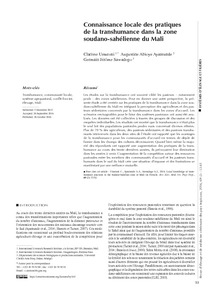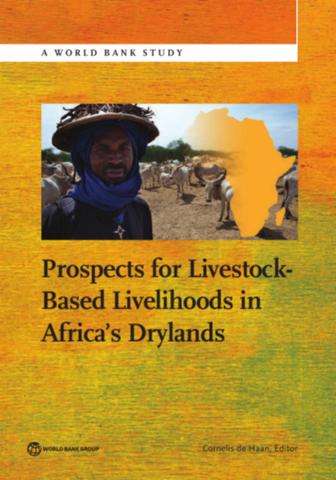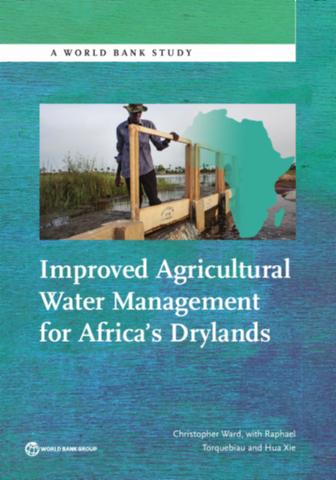Les études sur la transhumance ont souvent ciblé les pasteurs – notamment peuls – des zones sahéliennes. Pour en donner une autre perspective, la présente étude a été centrée sur les pratiques de la transhumance dans la zone soudano-sahélienne du Mali en intégrant la perception des agriculteurs…
After the severe droughts in the 1970s and 1980s, and subsequent debates about desertification, analyses of satellite images reveal that the West African Sahel has become greener again. In this paper we report a study on changes in tree cover and tree species composition in three village…
It took scientists more than three decades to transform a perceived desertification crisis in the Sahel into a non-event. Looking beyond the Sahel, the chapters in this book provide case studies from around the world that examine the use and relevance of the desertification concept. Despite an…
Meeting Name: African Forestry and Wildlife Commission
Meeting symbol/code: FO:AFWC/2016/10
Session: Sess. 20
In the Sahel, around 65 percent of the active population works in the agriculture sector and their livelihoods are therefore affected by climate change, markets and environmental factors. More than half of these are women. Recurring crises pose real concerns for the achievement of sustainable…
Prospects for Livestock-Based Livelihoods in Africa’s Drylands examines the challenges and opportunities facing the livestock sector and the people who depend on livestock in the dryland regions of Sub-Saharan Africa. It presents a novel way of thinking about pastoral development, grounded in a…
Prospects for Livestock-Based Livelihoods in Africa’s Drylands examines the challenges and opportunities facing the livestock sector and the people who depend on livestock in the dryland regions of Sub-Saharan Africa. It presents a novel way of thinking about pastoral development, grounded in a…
This publication will present efforts by FAO and partners on mapping the intervention area of the Great Green Wall initiative and restoration opportunities based on data gathered through Collect Earth and in support of presenting FAO's effort at COP22 in Marrakech on 14 November 2016.
This paper begins by exploring what the term family farming means and how appropriate it is in the NENA region. It will explore more generally the role of farming and agriculture in the broader political economy of the region. The paper establishes the distinctive features of the region, what…
Les terres arides couvrent près de la moitié de la surface terrestre et abritent un tiers de la population mondiale. Elles sont confrontées à des défis hors du commun, notamment ceux posés par la désertification, la perte de biodiversité, la pauvreté, l’insécurité alimentaire et les changements…
Dryland regions in Sub-Saharan Africa are home to one-half of the region’s population and three-quarters of its poor. Poor both in natural resources and in assets and income, the inhabitants of drylands are highly vulnerable to droughts and other shocks. Despite a long history of interventions…
Dryland regions in Sub-Saharan Africa are home to one-half of the region’s population and three-quarters of its poor. Poor both in natural resources and in assets and income, the inhabitants of drylands are highly vulnerable to droughts and other shocks. Despite a long history of interventions…





